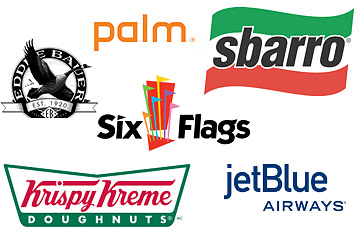
Correction Appended Oct. 22, 2008
For hundreds of U.S. companies, the federal bailout may be too little, too late. Bankers, lawyers and credit analysts say the government's plan to invest billions into the nation's banks is doing little to ease the credit crunch for U.S. businesses. The result, they say, is that many companies now struggling to get financing may soon be out of business. "In the past few weeks, lending has been getting tighter, not looser," says Larry Flick, a partner at law firm Blank Rome, which helps companies get financing. "All the moves the government is making to end the credit crisis may have a trickle-down effect, but I am not seeing it yet."
In a report released Tuesday, ratings agency Standard & Poor's says there are 140 large U.S. companies on its "Weakest Links" list of low quality debtors — the group "most vulnerable to default." That's up nearly twofold from the beginning of this year. Among the troubled firms on the agency's list are such household names as clothing retailer Eddie Bauer, amusement park operator Six Flags and pizza chain Sbarro. Also on the list are doughnut baker Krispy Kreme and mobile technology titan Palm, as well as a number of the nation's largest airlines, including JetBlue and the corporate parents of United and American.
"We are seeing companies across a wide variety of sectors that are struggling," says Sam Rovit, who heads up Bain Corporate Renewal, the optimistically named restructuring division of Bain & Company. If the credit squeeze doesn't loosen up quickly, he expects a "tidal wave of bankruptcies among large companies."
Analysts say dozens of smaller businesses have the same or worse predicament. "If the biggest companies in the nation are having a tougher time getting financing, then it's going to be much more difficult for smaller firms to get credit," says Martin Fridson, whose firm Fridson Investment Advisors analyses corporate bonds.
Of course, plenty of large U.S. companies are still able to get loans. A number of banks, such as JPMorgan Chase and Wells Fargo, who were not hit as badly by losses in the mortgage market, say their lending business never slowed.
But the sudden disappearance of some big financial companies as well as a cutback in lending activity at many banks has made it tougher and more expensive for companies to get funding. Hedge funds, too, which are having their worst year on record, have retreated from the lending business. And observers say the government's bailout plan won't change the problems companies are having getting funding anytime soon.
The problem is that many of the moves so far, like insuring money-market mutual funds, have been made to shore up the nation's commercial paper markets. But small companies or those that are short on capital cannot access the commercial paper market, which is generally reserved for companies with good credit. What's more, while the Treasury is urging banks to boost lending in the wake of the government's $250 billion investment into these firms, industry observers are skeptical that it will actually happen. "The idea that more capital is going to influence how much banks lend is a misconception of how banking works," says John Simons of Corporate Fuel Partners, who has spent 35 years in the commercial banking business. "Banks look at the economic outlook when deciding to make a loan, and the outlook is looking a whole lot worse."
With fewer banks making loans, more companies are turning to other sources of capital. Gerald Joseph, president of asset-based lender [i.e., lending secured by an asset] Gerber Finance, says his phone has been busy lately with calls from executives who used to get loans from banks. But, like other non-bank lenders, Joseph says he is being much more selective about which companies he does business with. "We are tightening our lending criteria," says Joseph. "We are turning away many more new clients than we used to." GE Capital, one of the nation's largest non-bank lenders, has also reportedly decided to curtail its lending practices for the rest of the year.
For companies that have loans that are coming due in the next few months and need to refinance, the continued credit crunch could mean they will be forced to file for bankruptcy or shut down. Bain's Rovit estimates that there will be 75 bankruptcies this year among companies with at least $100 million in assets, up from just 13 last year. He expects the number of bankruptcies to continue rising next year as well. S&P says its watch list used to be filled mostly with homebuilders or mortgage companies. But the latest additions are coming from industries such as retailing and media that are generally far removed from the mortgage and housing bust.
The original version of this story incorrectly identified Bain & Company as Bain Capital. They are separate companies.
(Click here for photos of the 1958 recession.)
(Click here for a package on the biggest ever golden parachutes.)
